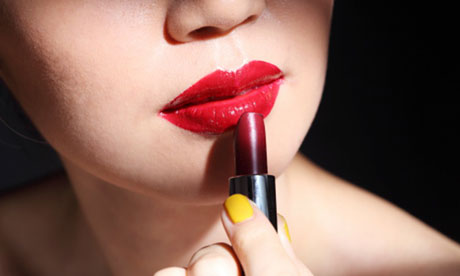
My 12-year-old daughter keeps wearing lipstick. I am even less thrilled by this after reading a story in the New York Times warning that lipsticks contains metals such as lead and aluminium. Which can't be right, can it?
Lead is toxic to nerve cells, especially in children. Aluminium powder, used as a stabiliser to stop the colours bleeding, is also toxic. Cancer Research UK states that a "persistent hoax claims that lipsticks contain lead and therefore cause cancer". But for a hoax, the claim has had considerable attention.
The US Food and Drug Administration (FDA) published a report on lead and lipsticks and has an ongoing question and answer page on its website. It found that lead levels in 400 lipsticks it tested ranged from 0.026 parts per million (or ppm) to 7.19ppm. The FDA says these are not levels to worry about – even though they are higher than the recommended amount of lead in sweets, which is 0.1ppm.
Since we don't eat lipstick, this should be reassuring. But the New York Times story is based on a research paper in Environmental Health Perspectives (EHP) whose lead author, Dr Katharine Hammond, was quoted as saying: 'Treat [lipstick] like something dangerous, because if [children] eat it we are talking about a comparatively large level of metals going into a small body." Should we worry or not?
The solution
In the EHP study researchers tested the metal content of 32 lip products and found that in nearly half of the samples the lead level was more than 0.1ppm. Aluminium and other metals were found in higher concentrations than lead. The authors then estimated how much of each metal a person would eat, based on industry assumptions of how much lipstick people swallow a day (24mg) and warned that people could be getting more metals from their lipstick than is good for them. Evidence for the effects of other metals is weaker than for lead.
The industry argues that lead is fairly ubiquitous and that we ingest more from other sources than we ever could from lipstick. The Health Protection Agency lists sources of lead, saying: "Exposure to inorganic lead occurs primarily through food and drinking water, although exposure via soil, dust, air and paint chips significantly contribute to the overall exposure."
The variation in lead levels between manufacturers suggests some could reduce contamination (lead is banned from cosmetics in the UK). But the Cosmetics Europe website says any lead ingestion from makeup is 1,000 times less than the amount we swallow in drinking water.
I will of course be telling my daughter to stop using lipstick immediately. I will apply it without licking my lips. Anyone looking for more rational information on the risk of any chemicals should go to the Environmental Working Group website.

